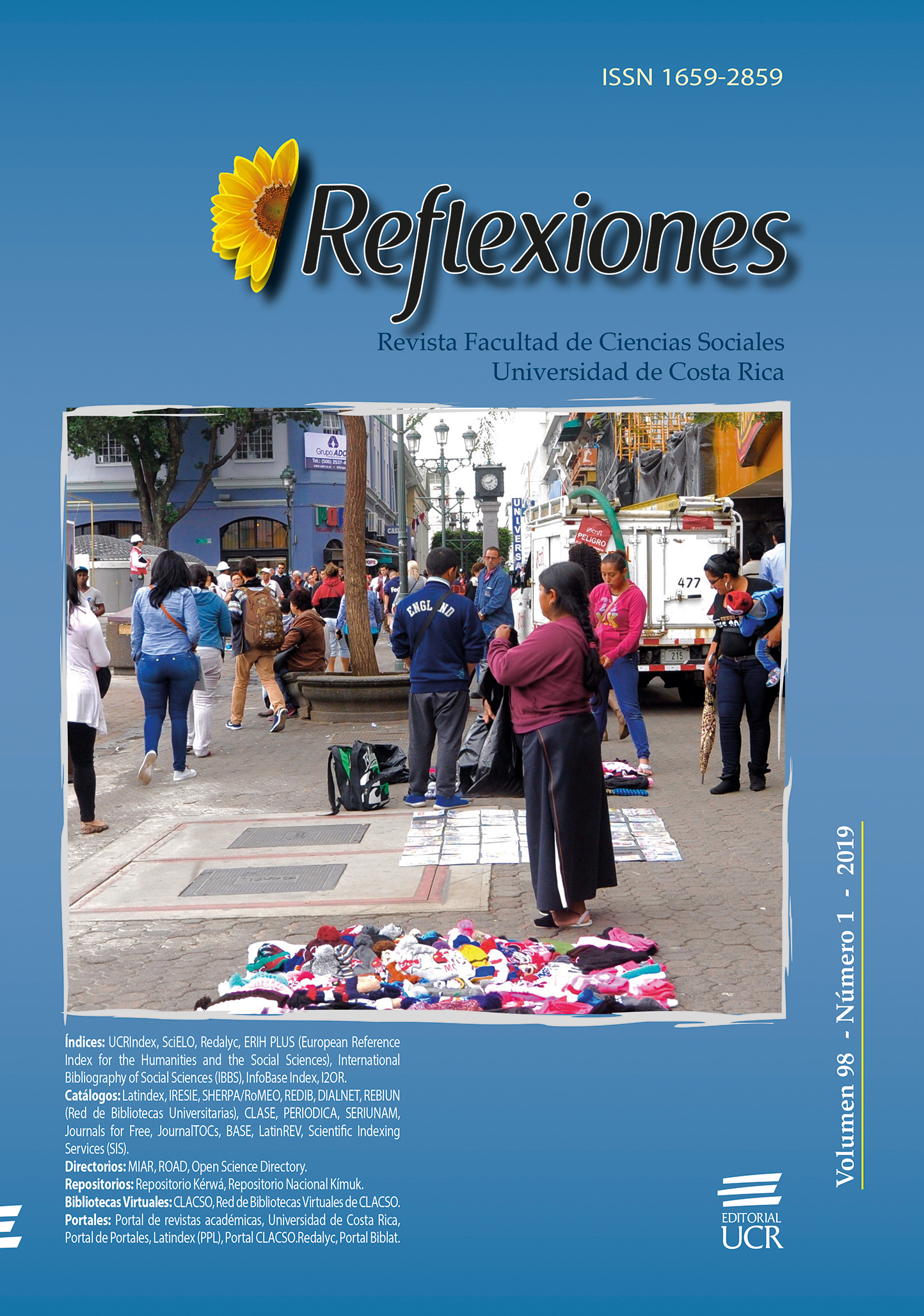Abstract
What does it mean to practice “tradition” in indigenous communities? This article focuses on an ethnographic analysis of celebrations in the Mixtec transnational community of San Juan Mixtepec, Oaxaca, Mexico in the light of the anthropological concept of “tradition”. This article investigates the relationship between the creation, maintenance, and transformation of the practice of tradition by the analysis of some of the celebrations of this Mixtec community. Specifically, the article presents tradition as a “chameleonic” concept which resides in the space between permanence and transformation, providing an historic or commemorative foundation for the practices and memories of its participants and working as a dynamic context for the exploration of new identity constructions. In this way, this article proposes a new analytic model for the investigation of indigenous transnational communities, where traditions are portrayed as a catalyst for senses of belonging in an ethnographic context where daily experiences are marked, in many ways, by movement.
References
Anttonen, Pertti J. (2016). Tradition through Modernity. Postmodernism and the Nation-State in Folklore Scholarship. Helsinki: Finnish Literature Society.
Arévalo, Javier Marcos. (2004). La tradición, el patrimonio y la identidad. Revista de estudios extremeños, volumen 60 (3), 925-956.
Ben-Amos, Dan. (1984). The Seven Strands of Tradition: Varieties in its Meaning in American Folklore Studies. Journal of Folklore Research, volumen 21 (2/3), 97 - 131.
Besserer, Federico y Michael Kearney. (Eds.). (2006). San Juan Mixtepec. Una comunidad transnacional ante el poder clasificador y filtrador de las fronteras. México: Universidad Autónoma Metropolitana.
Cornelius, Wayne A., David S. FitzGerald, Jorge Hernández-Díaz y Scott Borger (Eds.). (2011). Migracíon desde la Mixteca: Una comunidad transnacional en Oaxaca y California. México: Miguel Ángel Porrúa.
Cornelius, Wayne A., Micah Gell-Redman, Hillary S. Kosnac, Pedro Lewin Fischer y Verónica Noriega (Eds.). (2017). El nuevo rostro de la migración mexicana: Una comunidad transnacional en Yucatán y California. México: Miguel Ángel Porrúa.
Edinger, Steven T. (1985). Camino de Mixtepec: Historia de un pueblo en las montañas de la Mixteca y su encuentro con la economía norteamericana. Fresno: Asociación Cívica Benito Juárez.
Glassie, Henry. (1995). Tradition. The Journal of American Folklore, volumen 108 (430), 395 – 412.
Graburn, Nelson H.H. (2001). What is Tradition? Museum Anthropology, volumen 24 (2/3), 6-11.
Handler, Richard y Jocelyn Linnekin. (1984). Tradition, Genuine or Spurious. The Journal of American Folklore, volumen 97 (385), 273-290.
Hernández-Díaz, Jorge. (2011). La migración en Oaxaca, una mirada a vuelo de pájaro. En Wayne Cornelius, David S. FitzGerald, Jorge Hernández-Díaz y Scott Borger (Eds.), Migracíon desde la Mixteca: Una comunidad transnacional en Oaxaca y California. México: Miguel Angel Porrúa.
Herrejón Peredo, Carlos. (1994). Tradición. Esbozo de algunos conceptos. Relaciones, volumen 15, (59), 135 - 149.
Hobsbawm, Eric y Terence Ranger. (Eds.). (1983). The Invention of Tradition. Cambridge: Cambridge University Press.
Horner, Alice E. (1990). The Assumption of Tradition: Creating, Collecting, and Conserving
Cultural Artifacts in the Cameroon Grassfields (West Africa). (Tesis doctoral inédita). University of California, Berkeley.
Howard, Robert Glenn. (2013). Introduction: Vernacular Authority in Everyday Conversation. En Trevor J. Blank y Robert Glenn Howard (Eds.), Tradition in the Twenty-First Century: Locating the Role of the Past in the Present. Boulder: University of Colorado Press.
Joyce, Arthur A. (2010). Mixtecs, Zapotecs, and Chatinos: Ancient Peoples of Southern Mexico. Oxford: Wiley-Blackwell.
Lestage, Françoise. (2011). Los mixtecos en Tijuana. Reterritorialización y construcción de una identidad colectiva. México: El Colegio de la Frontera Norte.
Madrazo Miranda, María. (2005). Algunas consideraciones en torno al significado de la tradición. Contribuciones desde Coatepec (9), 115 - 132.
Mould, Tom. (2005). The Paradox of Traditionalization: Negotiating the Past in Choctaw Prophetic Discourse. Journal of Folklore Research, volumen 42, (3), 255 - 294.
Nagengast, Carole y Michael Kearney. (1990). Mixtec Ethnicity: Social Identity, Political Consciousness, and Political Activism. Latin American Research Review, volumen 25, (2), 61-91.
Noyes, Dorothy. (2009). Tradition: Three Traditions. Journal of Folklore Research, volumen 46, (3), 233 - 268.
Ó Giollán, Diarmuid. (2000). Locating Irish Folklore: Tradition, Modernity, Identity. Cork: Cork University Press.
Ravicz, Robert S. (1965). Organización social de los mixtecos. México: Instituto Nacional Indigenista.
Rieger, Ivy A. (2015). Where the Clouds Descend: Fiestas and the Practice of Belonging in San Juan Mixtepec, Oaxaca, Mexico (Tesis doctoral inedita). University of Colorado, Boulder.
Rieger, Ivy A. (2017). La metamorfosis de la serpiente en la cultura mixteca. En Claudia Carranza Vera, Arturo Gutiérrez del Ángel y Héctor Medina Miranda (Eds.), La figura de la serpiente en la tradición oral iberoamericana. España: Fundación Joaquín Díaz.
Rieger, Ivy A. (2018). Memoria, pertenencia y la práctica de las fiestas en una comunidad mixteca. Boletín de Antropología, volumen 33, (56), 184-204.
Ruvalcaba, Daniela Oliver y Cristian Torres Robles. (2012). Excluidos y ciudadanos. Dimensiones del poder en una comunidad transnacional mixteca. México: Casa Juan Pablos.
Terraciano, Kevin. (2001). The Mixtecs of Colonial Oaxaca: Ñudzahui History, Sixteenth through Eighteenth Centuries. Stanford: Stanford University Press.
Toren, Christina. (1988). Making the Present, Revealing the Past: The Mutability and Continuity of Tradition as Process. Man, volumen 23, (4), 696 - 717.
Velasco Ortíz, Laura. (2005). Mixtec Transnational Identity. Tuscon: The University of Arizona Press.

